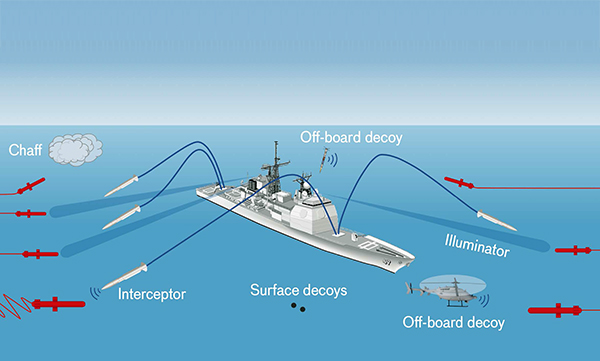Centre of Excellence Set up
Steps are being taken by the armed forces to ensure effective use of artificial intelligence (AI) in fighting conflicts, which is fast becoming a critical operational necessity that may well decide the outcome of wars in the future. Army, Navy and IAF to DRDO labs, are increasingly focusing on AI to enable faster decision-making and shortening the sensor-to shooter loop, AI-powered surveillance and weapon systems.
China is leagues ahead with its long-standing focus on “informatized” and “intelligentized” warfare.
The Indian defence establishment, on its part, now has a Defence Artificial Intelligence Council (DAIC) led by the defence minister to provide overall guidance and support. Defence minister Rajnath Singh, incidentally, had earlier declared that “25 defence-specific AI products” will be developed by 2024.
A Defence AI Project Agency (DAIPA) has also been created under the secretary (defence production), with Rs 100 crore earmarked annually for AI-enabled projects.
Indian Navy has launched major projects and initiatives to incorporate new-age advanced technology into the service at systems and processes levels. Along with the centres of excellence, the navy has begun exposing its personnel to academics and experts from outside, keeping the future in mind.
To equip the Indian Navy with modern era technologies, a workshop on the contemporary topic ‘Leveraging Al’ was organized by the Navy’s premier technical training institute INS Valsura from 19 to 21 January 2022.
The workshop witnessed the participation of renowned IT Companies like Google, IBM, Infosys and TCS who shared the industry perspective during the three-day event. Conducted under the aegis of Southern Naval Command, the mega event also included distinguished academicians from IIT Delhi, New York University, Amrita University and Dhirubhai Ambani Institute of Information and Communication Technology (DA- IICT), who deliberated about the usage of latest trends and applications of Artificial Intelligence.
The Navy has 30 ongoing AI projects encompassing autonomous systems, maritime domain awareness, perimeter security, decision-making, predictive inventory maintenance and management. The Navy is also creating an AI centre of excellence (CoE) at INS Valsura in Jamnagar, which already has a modern lab on AI and Big Data Analysis (BDA). A state-of-art lab on AI and BDA was also set up in January 2020.
The creation of the Centre of Excellence (CoE) in the field of AI at INS Valsura, will be instrumental in the progress of pilot projects related to the adoption of AI and BDA in the domain of maintenance, HR and perception assessment. Likewise, the Indian Navy is also unifying and reorganising its enterprise data, as data is the fuel for all AI engines.
Understanding the strategic importance of these niche technologies, the Indian Navy has also created an ‘AI Core Group’, which meets twice a year for assessing all AI/ ML initiatives.
The periodic reviews of AI projects are being held to ensure the adherence of the promulgated timelines and to steer the AI initiatives, which are envisaged to have both tactical and strategic level impact. Further, the Indian navy also conducts training in AI/ ML across all levels of specialty for its officers and sailors. These trainings take place both within Navy’s own training schools as also renowned Indian Institutes of Technology (IITs). Notably, big and small AI linked courses have been training several personnel of the India Navy.
Background
The AI Task Force set up in 2017 had also made recommendations on how to make India a significant power in AI, in terms of both offensive and defensive needs, especially in aviation, naval, land systems, cyber, nuclear and biological warfare arenas.
Initial tenders or RFIs (requests for information) were also floated on dual-use AI capabilities.
The Indian Navy and Council of Scientific and Industrial Research (CSIR) inked an MoU, in April 2019, to undertake joint research and development of advanced technologies for the Indian Navy.
The document provided a formal framework for interaction between the Indian Navy and CSIR. It will facilitate joint R&D activities in diverse fields of mechanical, electronics, communication, computer science, propulsion systems, metallurgy and nanotechnology.
Some of the projects under the MoU included:
• Development of alternative desalination technologies
• Installation of wireless MEMS-based sensors for remote operation
• Residual Life Assessment studies of Gas Turbine Generator blades to improve reliability
Earlier in 2019, the Naval Science and Technological Laboratory (NSTL) had organised the NSTL – Academia Meet with the theme Artificial Intelligence for Naval Systems. A gathering of the academia and the Navy had proved to be an ideal platform for deliberation and discussion on AI and its application in defence systems, with specific emphasis on naval systems.
In March 2019, a combat management system developed by a private company was handed over to the Indian Navy. The CMS was created for India’s first indigenous aircraft carrier, also known as IAC-1 or Vikrant and was developed by Tata Power Strategic Engineering Division in collaboration with Weapon and Electronics System Engineering Establishment and MARS, Russia.
This naval CMS has the capability:
• Connects a ship’s sensors
• Weapons
• Data links
• Support measures to the staff performing combat tasks
• Have sensor control
• Sensor data fusion
• Threat evaluation
• Weapons control
AI will help in identifying potential threats unambiguously and immediately. It will also help the command team make informed decisions faster and rapidly detects and evaluate potential threats removing anomalies.
However, there are certain factors that need to be addressed so that they do not stand in the way of technical progress in the Indian Navy:
• Lack of Data science talent internally
• Lack of AI initiatives for the Navy
• Undeveloped eco-system for enterprise-level exploitation.


















